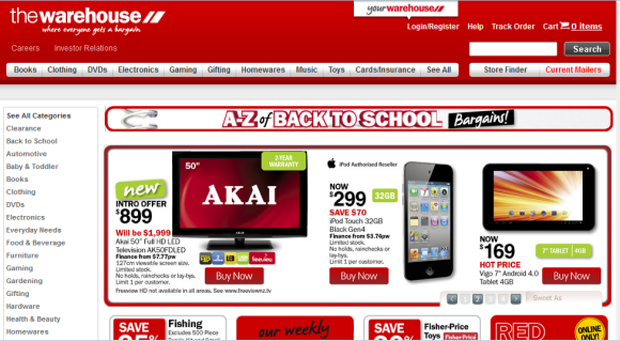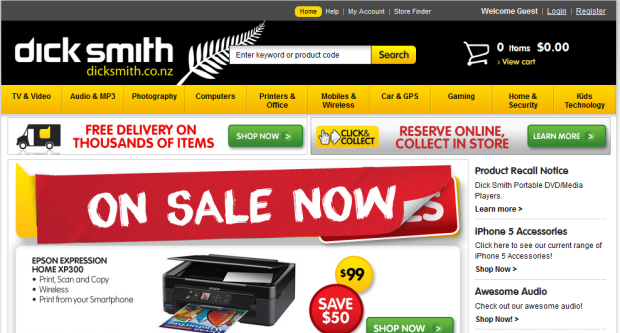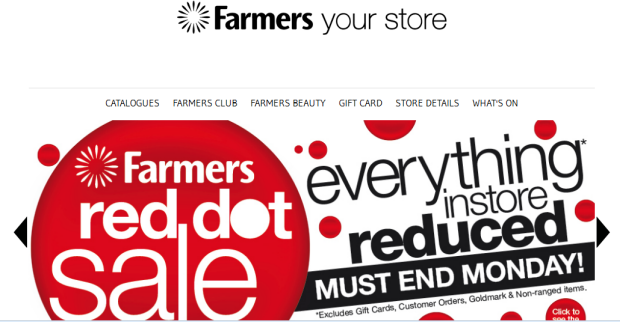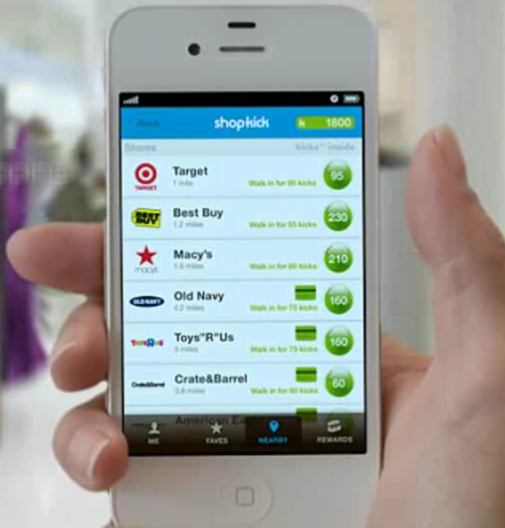The latest (2012) Nielsen Online Retail Report is out, and it confirms what we’ve already suspected: half of New Zealand (49%) now buys products online! That translates to more than 60% of Kiwi internet users who purchase online — and 97% of NZ web users who research products and services online (even if they eventually buy the products offline).
Already 5.1% of NZ retail sales are made online — and that percentage is expected to double over the next few years (it’s close to that already, in the U.K. and the U.S.).
So are you ready to take your business online?
Our online course, “Mastering eCommerce”, tells you what you need to know in a seven-week programme that steps you through the principles and practices of eCommerce in New Zealand.
The course has been created by Michael Carney, longtime marketer and author of the top-selling book “Trade Me Success Secrets” (now in its Second Edition) which tells how to sell effectively on this country’s largest and most successful eCommerce platform. Michael is also the creator of a number of other online courses (including several Social Media Marketing courses) and consults on many digital business initiatives.
This is an online course, conducted on a web-based e-learning software platform, enabling course participants to proceed at their own pace, accessing materials online. This particular eCourse provides content in a variety of multimedia forms, including videos, slideshows, flash-based presentations and PDF files. No special software is required to participate.
Course lessons will be provided in seven parts, for participants to access in accordance with their own timetables.
Course Content for MASTERING eCOMMERCE includes:
INTRODUCTION
In which we explore current eCommerce trends, locally and internationally, and identify what it takes to be a successful online seller. We also provide an Action Plan to help you construct an effective eCommerce programme as we proceed through the course.
LESSON ONE: KNOW YOUR CUSTOMERS: TURNING PROSPECTS INTO BUYERS
Customers have changed, largely thanks to the Internet. Google talks about a new process, the Zero Moment of Truth (ZMOT), which reflects the many ways that today’s consumers now research and but products. In this lesson we talk about prospective buyers, discuss what makes them buy (or not), review how and why they’ve changed in the last few years, discuss ZMOT and its implications for Kiwi sellers; and explore buyer motivations (and how you can trigger the urge to buy).
This lesson also covers:
- The 10 most important factors that consumers look for when deciding whether or not to buy from you (and how you can improve each aspect)
- The seven aspects of online shopping that shoppers most want to see improved
- The five most attractive offers that you can make, to close a sale
- The six factors that consumers are most likely to consider when comparison shopping
- The most popular items that Kiwis are buying online these days
- The four most-important services you can provide that will have consumers recommending you to their friends
- The five most likely reasons why consumers abandon their shopping cart in the middle of a purchase
- The growing trend towards “showrooming” — visiting a store to view a product but then actually purchasing it online — and what you can do about it
- The perils of too much analytics: how Target figured out a teen girl was pregnant before her father did
LESSON TWO: KNOW WHAT ACTUALLY SELLS ONLINE (AND WHAT PROSPECTIVE BUYERS WANT TO KNOW)
In this lesson we show you how you can find out what people are actually searching for on the web — and where to go to find out what’s hot now (and what may be hot soon). Are you actually selling the right products online? Here’s where you find out.
Lesson Two also covers:
- How you can tell if your business is really suited to eCommerce
- The seven most common fears of online retailing
- The 71 keys to successful eCommerce websites
- Twenty bad practices to avoid
- The amazing market intelligence you can steal from your competitors
- The hot secrets you can learn from Trade Me, Daily Deal Sites, eBay, Amazon and Alibaba
- The world’s leading online retailers — and what they can teach us about best practices in ecommerce
LESSON THREE: KNOW THE MARKETPLACE
So where should you actually sell your products online? In this lesson we explore the characteristics of, and the opportunities (and pitfalls) associated with, the marketplaces available to you: your own website, Trade Me, eBay, local Daily Deals sites, Amazon.com, Facebook, Mobile, location-based commerce, niche sites and more.
Lesson Three covers:
- How to structure your website pages to make more sales (not lose them)
- How to turn your shopping cart into an effective selling tool
- The untapped power of the “Thank You” page
- The staggering growth of smartphone and tablet usage in New Zealand — and why that matters so much to online retailers
- The surprising range of products purchased by consumers on their smartphones and tablets — and the significant implications for online retailers
- The 10 most important ways in which consumers are using their mobile phones to shop online more effectively — and what you absolutely must do to take advantage of this hottest of new trends
- The seven most important steps you must take when listing your products on Trade Me or eBay
- Why Daily Deal sites can destroy your business if you don’t take these precautions
- What consumers are really looking for on Facebook — and how to turn a casual like into real (and profitable) conversations with your customers
LESSON FOUR: GETTING NOTICED
You won’t sell anything if you don’t attract visitors to your listings — but how do you get noticed online? We explore digital marketing tools such as Organic Search, Pay Per Click, Social Media Marketing, Online Video, Affiliate Marketing and of course email.
Lesson Four shows you:
- How to see what Google sees when it looks at your website. We don’t want to scare you, but you’ll probably be horrified (most online businesses are, at least at first).
- The strategy we call Trojan Horse Marketing — and how you can use it effectively to build ongoing relationships with customers and prospects
- The brave but risky strategies adopted by some of the world’s best ecommerce operators — and why they’re now virtually compulsory
- The source of more than 30% of all traffic to leading ecommerce sites — and the steps they take to maximise that traffic
- How often you should communicate with your customers, and what happens if you talk too much or too little
- How an observation made long ago by one of the world’s leading admen is now absolutely vital to your online success
- The single technique that accounts for a whopping 77,316 website visits each month to a leading U.S. online retailer
- Cheap and cheerful tools you can use to streamline your online marketing, whether you’re a massive multinational or a sole trader
- The key ingredients that can spell success or failure for your online store
LESSON FIVE: MAKING MORE MONEY FROM EVERY SALE
Great — you made a sale! But how do you grow the money you earn from every sale? We take you through smart strategies to ensure that you’ve maximised the amount of money you can earn — all the while adding value to the customer. And we tell you how best to track key metrics such as clickthroughs and conversions.
Lesson Five shares:
- The very best moment to ask your customer to spend a little (or a lot) more
- Upselling and cross-selling strategies that work best online
- Data, data, data — and why that replaces ‘location’ as the online retailing mantra
- How an oddly-named technology pioneered by Pattie Maes at MIT now powers the world’s most effective online selling machine (and how you can and must use it yourself)
- The three crucial ingredients of online retailing success — and how you can constantly refine them to improve your profitability in any market
- The secrets of today’s online retailing sales funnel
- Lessons you can learn from a long-dead professor
LESSON SIX: SURVIVING ONLINE SUCCESS
So now you’re selling successfully online — but you’re also drowning in paperwork, struggling to get goods out the door and in danger of being overwhelmed by your own success. We look at currently available tools and best practices (including listing, multi-channel management and logistics systems) and talk you through what you need to do to cope. In this lesson we also explore the steps you must take to build your reputation and credibility online — and how to protect that reputation at all costs.
Lesson Six takes you through:
- The ten questions that will kill your business if you don’t know the right answers
- Effective economies of scale and how they can be applied to your business
- The one common failing that will absolutely doom virtually any online sale
- Logistics solutions — where to find them and what to evaluate
- The importance of tracking for smooth after-sales service
- How to identify and exceed consumer expectations
LESSON SEVEN: COMPETING AGAINST GIANTS
One of the most common issues facing online retailers: “how do I compete effectively against the category killers? They have the buying power and I’m just a small business.” Well, as David found when he went up against Goliath, there are definitely ways to compete and win. We explore the most effective of those strategies (even in commodity-based categories) and start you thinking about what steps you need to take to redefine your business and your products in the online space.
Courtesy Lesson Seven, you’ll discover:
- How Curation has become perhaps the most important new strategy for online sellers
- Why today you need to be more hare than tortoise to compete effectively
- The new 10 Ps of online retailing and why they matter to you
- Business-changing lessons we can learn from Procter & Gamble and other global marketers
CONCLUSION
Time to turn all that learning into a planned sales programme. We give you the tools (or tell you where to find them). We also share research that reveals online retailers’ top priorities this year and show you how to prepare for retailing tomorrow.
For details of the next Mastering eCommerce course (including timing and pricing and how to register), please click here.








